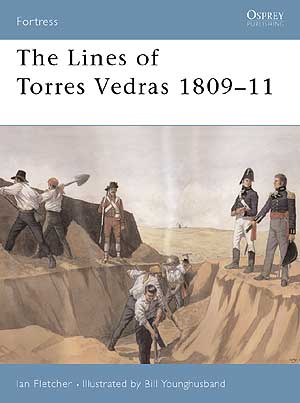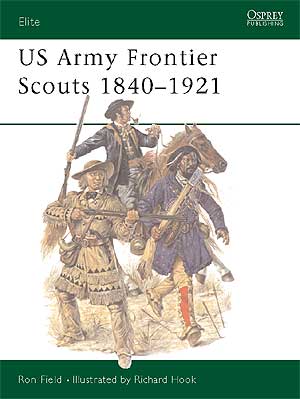 Osprey Roundup Osprey Roundup
My reviews of the latest Osprey books have been missing for a couple of months due to circumstances beyond my control – one month’s batch arrived too late to review in time, and the next month I had a major computer failure that not only lost the reviews already written but kept me out of communication for a long time. So this time around I’ll have to play catchup with very short notes and also cherry-pick what I think are the ones that will most interest Internet Modeller readers. All are of course from Osprey Publishing Ltd so I won’t repeat that every time. Warrior 70, Japanese Warrior Monks AD 949-1603, by Stephen Turnbull, illustrated by Wayne Reynolds, ISBN 1-84176-573-2. Stephen Turnbull has produced another cracker of a book here, explaining how the warrior monks rose to influence and fell from power. Great illustrations, both old ones and good new colour plates, show how they looked and give figure modellers the chance to model some uncommon types. Recommended. New Vanguard 75, German Pocket Battleships 1939-45, by Gordon Williamson, illstated by Ian Palmer, ISBN 1-84176-501-5. Deustschland/Luetzow, Admiral Scheer and Graf Spee are given their combat histories here – including Deutschland’s name change. Their final fates are described too, and there are well-chosen photographs and good colour plates for modellers. I think that smaller-scale models exist of all three, and anyone building them will really need this book to get the colour schemes right. Men-at-Arms 390, Roman Miltary Clothing (2) AD 200-400, by Graham Sumner with illustrations by the author. Volume 2 of this set takes us to the end of the Western Empire. Simply an unrivalled reference for anyone modelling Roman figures of the period – all the normal clothing items are here, from tunics to trousers, with the evidence set out including that for their colours. Essential!  New Vanguard 77, M24 Chaffee Light Tank 1943-85, by Steven J Zaloga, illustrated by Jim Laurier, ISBN 1-84176-540-6. New Vanguard 77, M24 Chaffee Light Tank 1943-85, by Steven J Zaloga, illustrated by Jim Laurier, ISBN 1-84176-540-6.
Steve Zaloga has done it again, with another essential reference for armour modellers – especially with the updated Italeri kit just released. Loads of good photographs, a great selection of colours and markings in the colour plates, and authoritative text. Highly recommended. New Vanguard 78, Greek and Roman Siege Machinery 363 BC – AD 363, by Duncan B Campbell, illustrated by Brian Delf, ISBN 1-84176-605-4. Fascinating reconstructions of ancient siege machines, with the evidence for them. Many, though not all, are too big to be practical in dioramas to 54mm scale – but some are small enough for such use and there’s a host of possibilities for using sections of them as vignette bases. And for those who like wargaming ancient sieges, this is THE source. Recommended. Campaign 127, Dieppe 1942 Prelude to D-Day, by Ken Ford, illustrated by Howard Gerrard, ISBN 1-84176-624-0. Here’s an excellent reference to the Dieppe landings. Not much for amour modellers, but if you want to know what actually went wrong and what went right this is the place to look. Excellent, too, for wargamers recreating the assault – all the details are given. Warrior 71, Roman Legionary 58 BC – AD 69, by Ross Cowan, illustrated by Angus McBride, ISBN 1-84176-600-3. This is the classical Legionary, from Caesars’ campaigns in Gaul to the Claudian campaigns in Britain and those of Vespasian in Judea. Recruitment, training, combat descriptions, with plenty of quotes from contemporary sources. If you like Simon Scarrow’s “Cato” books (they’re great, email me for ISBN numbers etc if you haven’t seen the series) or are simply interested in Roman military history, here’s great background reading. Warrior 77, French Soldier in Egypt 1798-1801, the Army of the Orient, by Terry Crowdy, illustrated by Christa Hook, ISBN 1-84176-628-3. Most of us know about Napoleon’s campaigns in Egypt and Syria, and here’s the life of his soldiers there. Lots of quotes from memoirs add atmosphere, and yes, the Camel Corps is included. Recommended.  Fortress 7, The Lines of Torres Vedras 1809-11, by Ian Fletcher, illustrated by Bill Younghusband, ISBN 1-84176-576-7. Fortress 7, The Lines of Torres Vedras 1809-11, by Ian Fletcher, illustrated by Bill Younghusband, ISBN 1-84176-576-7.
Anyone interested in the Pensinsular War has heard of the Lines of Torres Vedras, where the French army was repulsed and the Allies’ long march into France began. Here are the details of how they were built and held, and the campaign that resulted. Essential Histories, The American Civil War – This Mighty Scourge of War, by Cary W Gallagher, Stephen D Engle, Robert K Krick and Joseph Y Glatthaar, ISBN 1-84176-736-0. This is a compilation of the four separate Essential Histories dealing with the ACW. If you didn’t get those, and are interested in the War between the States or studying it for school, this single volume is a very handy reference. Warrior 73, Tito’s Partisans 1941-45, by Velimir Vuksic, illustrated by the author, ISBN 1-84176-675-5. The partisan war in former Yugoslavia was one of the fiercest guerilla campaigns known, and this is the story of the Titoists. They had formed units, uniforms, and even tanks by the end of the war. Personal accounts add to the interest. Recommended. Warrior 76, German Infantryman (2) Eastern Front 1941-43, by David Westwood, illustrated by Elizabeth Sharp, ISBN 1-84176-611-9. Here’s the story of German infantry in the Soviet Union from Operation Barbarossa to the end of the advances. Their life in a summer advance comes across in the personal memoirs as almost as unpleasant as was trying to survive in a Russian winter without proper winter clothing. Highly recommended. Warrior 74, Gebirgsjaeger, German Montain Trooper 1939-45, by Gordon Williamson, illustrated by Darko Pavolic, ISBN 1-84176-553-8. There’s little in print about the Gebirgsjaegers, so this is a welcome addition to the library. Recruitment, training and combat histories for each unit are given here. So is their specialised clothing and equipment – an opportunity for figure modellers to produce something different. Recommended!  Elite 91, US Army Frontier Scouts 1840-1921, by Ron Field, illustrated by Richard Hook, ISBN 1-84176-582-1. Elite 91, US Army Frontier Scouts 1840-1921, by Ron Field, illustrated by Richard Hook, ISBN 1-84176-582-1.
This is a great read. All the legendary figures are here – Kit Carson and Texas Jack Omohundro to name just two – as well as the Indian Scouts. Potted biographies deal with the well-know figures and their service, and unit histories cover the more anonymous scouts. Excellent, and highly recommended. New Vanguard 79, American Heavy Frigates 1794-1826, by Mark Lardas, illustrated by Tony Bryan, ISBN 1-84176-630-5. There’s a lot more to the story of the heavy frigates than just Old Ironsides, and it’s all here from the birth of the idea to its end. Clearly anyone building any of the Revell kits of Constitution will find this book interesting, but all the others have their histories too. New Vanguard 81, German Heavy Cruisers 1939-45, by Gordon Williamson, illustrated by Ian Palmer, ISBN 1-84176-502-3. This book deals with Admiral Hipper, Blucher, Prinz Eugen, Seydlitz and Luetzow from building through combat to final demise. Excellent colour scheme reference for modellers, with the changes introduced in refits pointed out.  Campaign 100, D-Day 1944 (1) Omaha Beach, by Steven J Zaloga, illustrated by Howard Gerrard, ISBN 1-84176-367-5. Campaign 100, D-Day 1944 (1) Omaha Beach, by Steven J Zaloga, illustrated by Howard Gerrard, ISBN 1-84176-367-5.
The name of Bloody Omaha is well known, and here is the story of the assault landings there with the reasons why they almost failed and how they finally succeeded. Highly recommended to all students of war. Fortress 9, English Civil War Fortifications 1642-51, by Peter Harrington, illustrated by D Spedaliere and S S Spedaliere, ISSBN 1-84176-604-6. If castles interest you, this book is right up your street. It shows how some old ones were strengthened and new forts built during the English Civil War, how they were besieged, assaulted and taken by their enemies. And that war did have some very intense sieges and assaults, which are described and included in the illustrations – giving great ideas for figure modellers looking for suitable dioramas. Fortress 10, The Maginot Line 1928-45, by William Allcorn, illustrated by Jeff Vanelle and Vincent Boulanger, ISBN 1-84176-646-1. Some folk think that the “impregnable” Maginot Line was actually overrun easily by the Germans in 1940. No, it wasn’t. It was outflanked and cut off, but many of the garrisons fought on and some did not surrender until well after the Armistice. Here’s how it was conceived, built and defended. Recommended!
| 








|